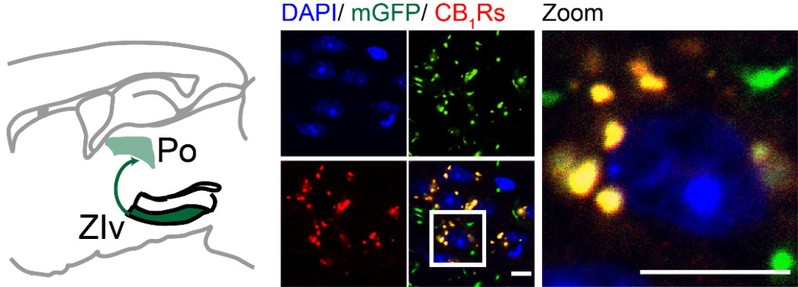How is the feeling of pain generated? And what is our body going through when we are in pain? “Words are in vain when a patient is trying to describe the feeling to a doctor” said by Virginia Woolf, British author. Similarly, it remains a challenge for neuroscientists to come up with felicitous scientific mechanisms to help people understand pain.
Researchers from Prof. LI Xiaoming’s lab, School of Brain Science and Brain Medicine, Zhejiang University School of Medicine, have been dedicated to studies regarding emotions and behaviors for years with several breakthroughs achieved. A newly published research provides critical insights underlying pain by describing a new circuit and molecular mechanisms in detail. This research findings are published in Neuron, on June 4th.
There are up to 20% of the global population suffering from chronic pain, not only presenting a massive clinical challenge, but also a route to understanding the basic circuit and molecular mechanisms of the nervous system. The novel research finding from LI’s Lab shows that when the body is subjected to pain-like traumatic stimulation, an alarming signal from the nerve endings reports it to the cerebral cortex via the circuit. Meanwhile, cannabinoids in a specific region of the thalamus blocks the upstream transmission of pain in this circuit, resulting inpain relieving. The pain information processing is just like a “highway” for sensing and information transmission, which also explains how the pain works. However, thalamus is one of the most mysterious sections in this pathway for sensation inside the brain. Further exploration of how the mechanisms underlying pain processing work as a whole brings much to be continued, which is what the LI's team has conducted regarding to this “black box”.
Previously, abnormal neural activity in both the zona incerta (ZI) and posterior complex of the thalamus (Po) are implicated in neuropathic pain, but their exact roles remain unclear. In particular, the precise cell-types involved and molecular mechanisms of the ZI-Po circuit that regulate nociception are largely uncharacterized.
The recent work identified that parvalbumin (PV)-positive neuronal projections from the ventral ZI (ZIv) to the Po (ZIv-Po) are critical for promoting pain behaviors, whereas selectively inhibiting ZIv-Po activity reduces painful sensory withdrawal responses. However, PV-positive neuron is not the “terminal”. The team is more concerned about where its downstream is, how they are connected and how to complete the pain message transmission to the end. With a method of tracing, the downstream is identified as Posterior complex of the thalamus (Po). Furthermore, the key molecule in moderating pain is cannabinoid type 1 receptors (CB1Rs). Notably, they are expressed specifically at the ZIv-Po axon terminals, and cannabinoids attenuate pain responses through presynaptic inhibition. Selective inhibition of the ZIv-Po circuit or administration of cannabinoids into the Po are sufficient to ameliorate pathological pain.

(ZIv-Po circuit and CB1Rs expression in Po)
“These findings demonstrate that CB1Rs play a critical role in regulating synaptic transmission in the ZIv-Po GABAergic circuit and prove the relationship between CB1Rs and pain,”said Prof. Li, “It brings up a promising therapeutic target in clinical use, there is much more to be digged out though and further discovery shall be made in appling medical cannabis to the treatment of pain-related disorders.,”
“This study is very comprehensive, using an impressive combination of different methodologies. The experiments were well designed, and executed with high quality. commented reviewers of Neuron. “The results are novel, revealing a new circuit of pain regulation and a potential central anatomical locus of cannabinoids analgesic action.”
Please refer to the link of this study:https://doi.org/10.1016/j.neuron.2020.04.027

(Team members of Prof. Li’s lab)